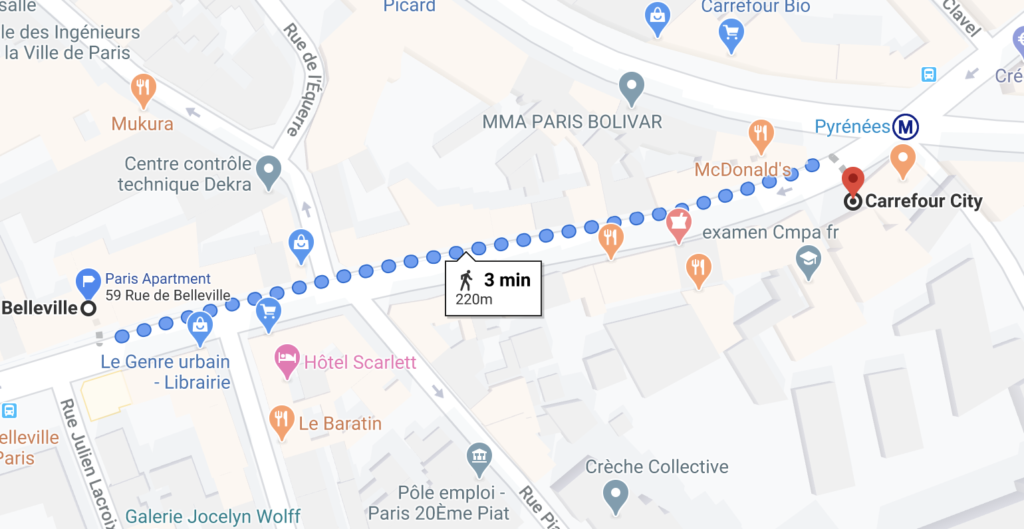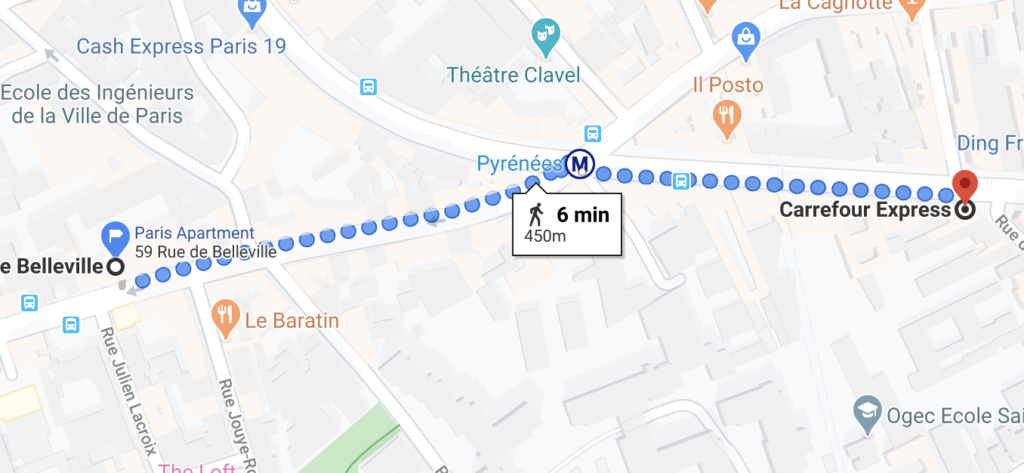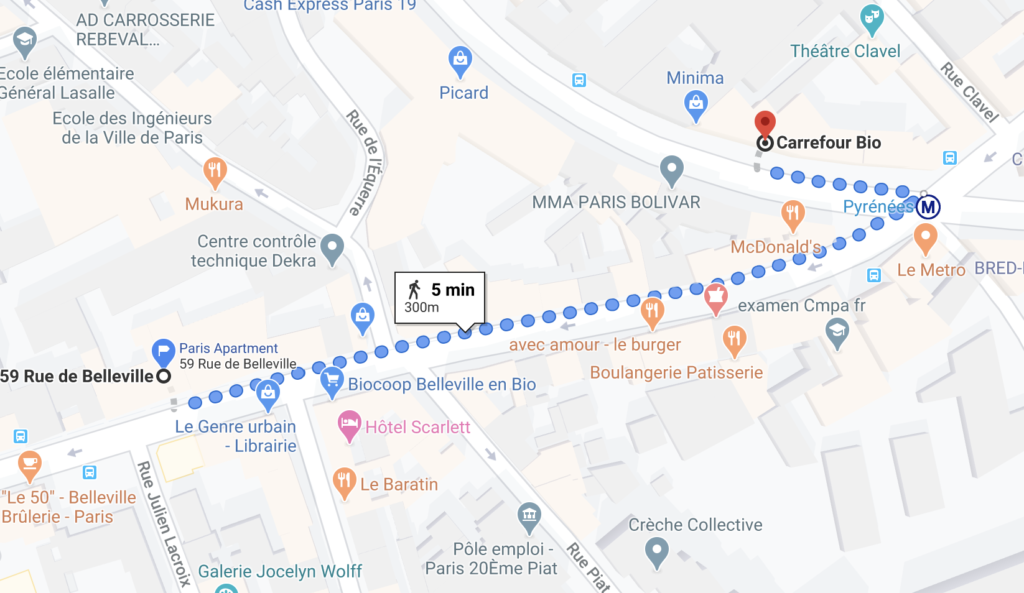20 Feb 99 Carrefours…
At our apartment in Belleville, Paris, we lived within a 6 minute walk of four Carrefour grocery stores. There were other grocery stores, as well, within that 6 minute walk radius. And an additional Carrefour at 8 minutes…




I was trying to understand what kind of business model would think this was a good idea (i.e. aren’t you just canabalizing your own sales if you put tons of stores close together?).
I didn’t spend a huge of time thinking about it but did come up with a few possible explanations.
1: Discourage Competition
I guess if a neighborhood is full of grocery stores already then it is less tempting to open a competing store? It seems like a tricky math to try and work out how many stores are necessary to discourage competition while still allowing for a profit.
2: Small Buildings
Perhaps the simplest explanation. Ground floors are only so big in Paris, and it is probably tricky to wait for neighboring ground-floor tenants to move out in order to create a larger store. So four small stores is just the same as one large store. The only thing is that they all have to carry more or less the same items, so you get the convenience of more stores, but not the selection of a big store.
3: Check-out Line Purchases
I definitely found myself going shopping more often because of the closeness of the grocery store, and when I did it was hard to resist grabbing a 3 euro half bottle of remarkably good Côtes du Rhône, or a dark chocolate + almonds chocolate bar, or some other small treat on my way out.



